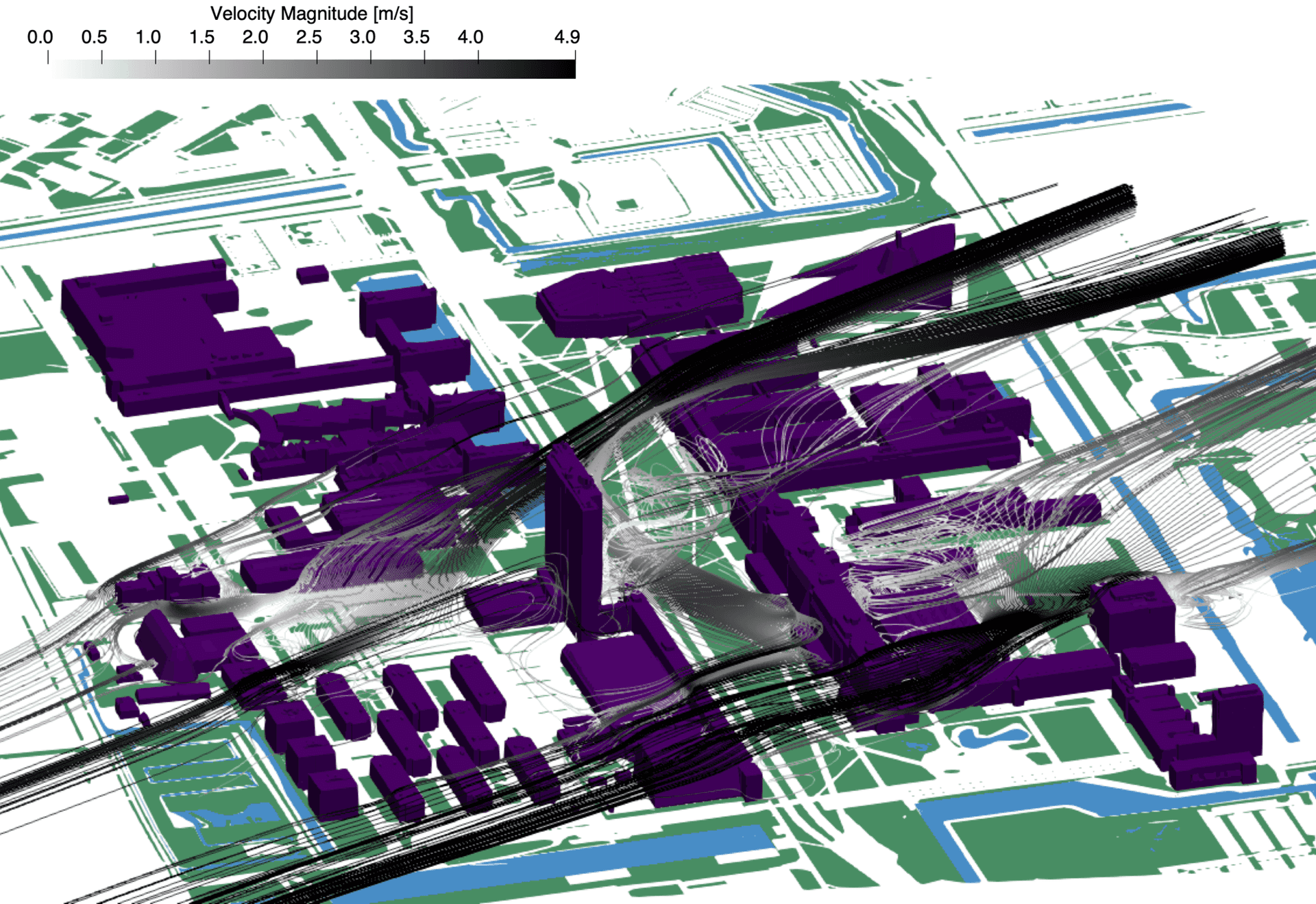
Modeling individual adaptation at scale
UrbanAIR, an EU-wide collaboration based at Delft University of Technology, is developing a digital twin for climate-adaptive urban planning. A key innovation is the linkage of global atmospheric models with individual adaptive behavior, using agent-based modeling and local weather data to understand how people respond to heat stress. This bottom-up approach can reveal deeper understanding of large-scale responses by aggregating the simulated choices of individuals at the neighborhood and city scale. The resulting tool will allow for deeper and more accurate exploration of different scenarios based on performance, cost, and equity impacts. Combined with other innovations, for instance, using LLMs to enhance the accuracy of agent models and allow researchers and practitioners to interact with them using natural language, these tools can be made more lifelike and accessible.
As platforms for modeling urban climate futures and adaptations take individual decisionmaking into account, they will not only become more realistic representations, able to make better predictions about the wide range of potential human responses to urban climate change—but they will also become more relatable, by allowing us to see how people are impacted individually at a human scale. However, significant challenges remain around data quality and privacy protection, particularly when modeling individual behavior. These challenges connect to broader ethical considerations in digital twin development, such as ensuring fair representation of different populations and protecting personal information while maintaining model accuracy. Integration with ethical frameworks for digital twins will be crucial for addressing these concerns as the technology evolves.


